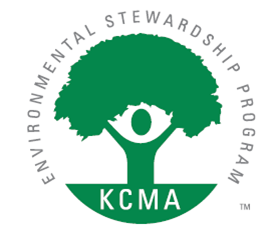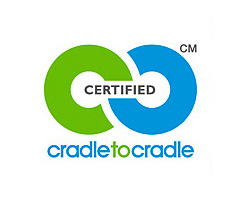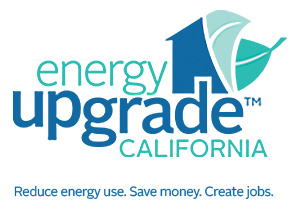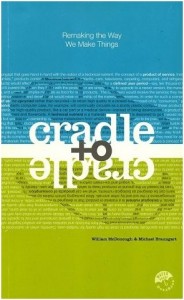
I’ve been researching kitchen cabinets for my sustainable apartment kitchen project here at Sustainable Schmidt, and stumbled upon the main “green” certification for the kitchen cabinet industry: KCMA‘s Environmental Stewardship Program (ESP). KCMA, the Kitchen Cabinets Manufactures Association, is an industry-based group with over 400 members that began in 1955. It started it’s ESP certification program in 2006 “to help cabinet manufacturers demonstrate their commitment to environmental sustainability and help consumers easily identify environmentally-friendly products.” Cabinet companies that seek certification have to go through the ESP’s point-based certification process, that involves collaboration with a sustainable forestry program and compliance with the formaldehyde emission level of the California Air Resources Compwood ATCM.
While this stewardship program seems relatively strict, I found it curious that this certification process for the cabinet industry is sponsored by its industry-based organization. When you consider the fact that KCMA was “founded with the goal of promoting growth for the entire cabinet industry and strengthening individual members,” it’s hard to see how the ESP can objectively evaluate this industry. One wonders if this “certified green” stamp that manufacturers can label their products with is less informative and more a form of greenwashing. The ESP does receive a third-party consensus from the American National Standards Institute, which somewhat alleviates my worries. However, ANSI’s mission statement is to “empower its members and constituents to strengthen the U.S. marketplace position in the global economy,” so economic factors still have a louder voice than environmental ones.
It might be informative to compare the ESP to what many consider to be a truly rigorous and objective third-party

certification system, Cradle to Cradle Certification. Brainchild of William McDonough, whose book I featured in my last post, Cradle to Cradle Certification “is a multi-attribute eco-label that assesses a product’s safety to humans and the environment and design for future life cycles.” The multi-tiered format of the C2C certification system, from Platinum down to Gold, Silver, and Basic, already demonstrates a big difference in the legitimacy between this and KCMA’s ESP, which lacks any sort of differential standards. In fact, C2C’s highest Platinum certification is so rigorous that no products have yet achieved this award. On the other hand, because their is only one standard certification within the ESP, their lacks any incentive for cabinet manufacturers to upgrade their processes above the required minimum, and fails to reward those that take extra steps in their processes to be more sustainable.
Unlike Cradle to Cradle’s required standards for each tier of certification, the ESP certification process follows a point-based system where not all possible points have to be undertaken to receive certification. Thus, manufacturers can skimp out on accomplishing certain aspects of it’s resource processes or product management completely unchecked without and consequences. Furthermore, applicants for the ESP only need to “self-certify” that they’ve achieved certain tasks by filling out various forms. C2C appoints their own project manager to each applicant who is trying to receive certification. Strange enough, in this article manufacturers have reported little to no added cost for compliance with ESP, which adds to the perception that this certification process might be too light on manufacturers, who barely need to change their processes to comply.
All these points strongly call to question the true sustainability of KCMA’s Environmental Stewardship Program. Something doesn’t sit right with industry-groups regulating industry-groups. This voluntary certification’s stamp can be misleading to customer’s who are looking for environmentally friendly products for their homes. Greenwashing or not, in 2007 KCMA gathered that its manufacturers sold a total of $10 billion in certified products. The monetary incentive to be “green” is there, and industries are finding ways to take advantage of that fact without having to change their processes and actually strive for environmental stewardship. Not surprisingly, there are yet to be any Cradle to Cradle Certified kitchen cabinet products, even on the Basic level.



